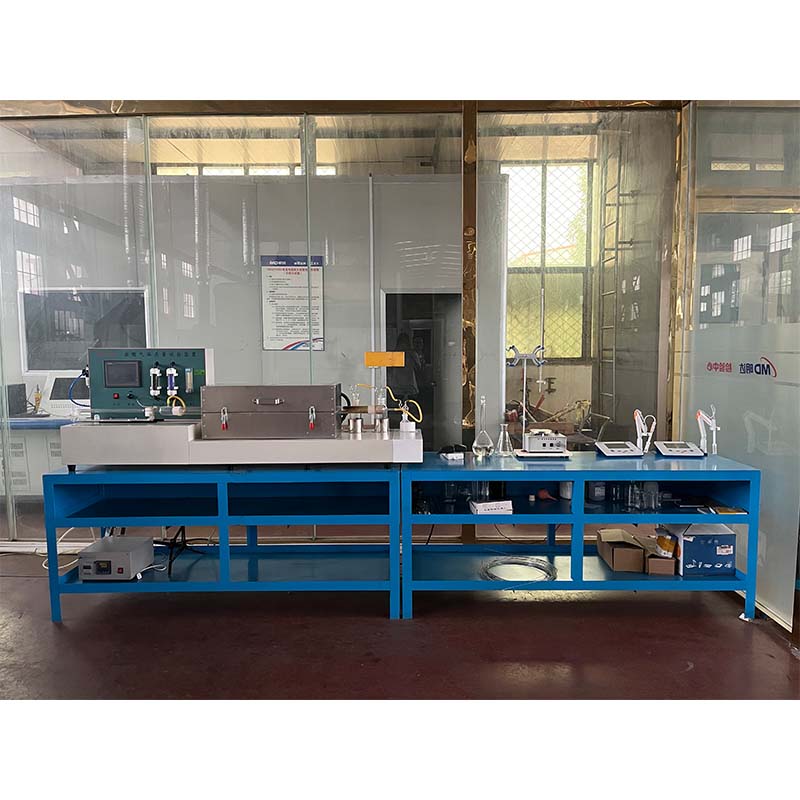ultraviolet irradiation polyolefin cross-linked equipment
Ultraviolet Irradiation in Polyolefin Cross-Linking Equipment
Ultraviolet (UV) irradiation has increasingly become a pivotal method in the field of polymer science, particularly for cross-linking polyolefins—an essential class of polymers that includes polyethylene (PE) and polypropylene (PP). The process of cross-linking involves forming covalent bonds between the polymer chains, enhancing the mechanical strength, thermal stability, and chemical resistance of these materials. This article focuses on the significance of UV irradiation in polyolefin cross-linking equipment and its implications for various industries.
Understanding Polyolefin Cross-Linking
Polyolefins are widely used in various applications due to their low cost, ease of processing, and excellent physical properties. However, their inherent limitations, such as poor heat resistance and a tendency to melt at elevated temperatures, necessitate enhancements through cross-linking. Traditional methods of achieving cross-linking include the use of chemical agents or heat; however, these methods can be energy-intensive and may produce undesirable byproducts.
UV irradiation provides an alternative that is both efficient and environmentally friendly. By exposing polyolefin materials to UV light, specifically tailored wavelengths can initiate photochemical reactions, leading to the formation of free radicals. These free radicals can then react with adjacent polymer chains, resulting in the formation of cross-links. The precision and control offered by UV irradiation make this method particularly appealing for manufacturers seeking to optimize the performance of polyolefin-based products.
Equipment for UV Irradiation
The equipment designed for UV irradiation of polyolefins typically includes UV lamps that emit specific wavelengths, often in the UV-A and UV-B range. These UV sources can be integrated into continuous processing lines or used in batch setups. Important components of the equipment include
1. UV Lamp System The heart of the process, the lamp system must be carefully selected based on the desired wavelength and intensity for effective polymer cross-linking. 2. Conveyor Belt or Chamber For continuous processing, a conveyor belt system allows for the uniform exposure of polyolefin sheets or films to UV light. Batch systems, on the other hand, may utilize enclosed chambers that ensure complete exposure.
3. Cooling Systems Excessive heat can degrade polymer properties; thus, cooling systems are vital for managing temperatures during and after the irradiation process.
4. Control Systems Advanced control mechanisms for monitoring the intensity and duration of UV exposure ensure consistent quality and effectiveness in the cross-linking process.
ultraviolet irradiation polyolefin cross-linked equipment

Advantages of UV Irradiation Method
The adoption of UV irradiation for polyolefin cross-linking presents numerous advantages
1. Energy Efficiency UV systems typically require lower energy inputs compared to thermal methods, helping in reducing overall production costs.
2. Reduced Environmental Impact The photochemical process minimizes the production of volatile organic compounds (VOCs), making it a greener alternative to traditional cross-linking methods.
3. Rapid Processing UV irradiation facilitates quick processing times, allowing manufacturers to enhance productivity and meet market demands more efficiently.
4. Tailored Properties By adjusting the UV exposure parameters, manufacturers can customize the mechanical and thermal properties of polyolefin materials to suit specific applications.
Applications in Industry
UV cross-linked polyolefins have found applications across various industries, including automotive, healthcare, and electronics. In the automotive sector, for example, UV cross-linked materials are utilized in fuel lines and connectors due to their enhanced chemical resistance. In healthcare, sterilization and improved mechanical properties make these materials suitable for medical devices and packaging.
Conclusion
In conclusion, ultraviolet irradiation is revolutionizing the cross-linking of polyolefins, providing an efficient, environmentally friendly, and cost-effective solution for improving polymer properties. As technology continues to advance, the role of UV irradiation in polyolefin cross-linking equipment is likely to expand, leading to new applications and innovations in material design. This method not only enhances the performance of polyolefins but also aligns with the growing emphasis on sustainability in manufacturing processes.
-
Why the Conductor Resistance Constant Temperature Measurement Machine Redefines Precision
NewsJun.20,2025
-
Reliable Testing Starts Here: Why the High Insulation Resistance Measuring Instrument Is a Must-Have
NewsJun.20,2025
-
Flexible Cable Flexing Test Equipment: The Precision Standard for Cable Durability and Performance Testing
NewsJun.20,2025
-
Digital Measurement Projector: Precision Visualization for Modern Manufacturing
NewsJun.20,2025
-
Computer Control Electronic Tensile Tester: Precision and Power for the Modern Metal Industry
NewsJun.20,2025
-
Cable Spark Tester: Your Ultimate Insulation Assurance for Wire and Cable Testing
NewsJun.20,2025
 Copyright © 2025 Hebei Fangyuan Instrument & Equipment Co.,Ltd. All Rights Reserved. Sitemap | Privacy Policy
Copyright © 2025 Hebei Fangyuan Instrument & Equipment Co.,Ltd. All Rights Reserved. Sitemap | Privacy Policy
